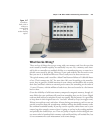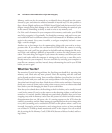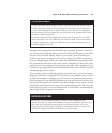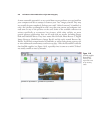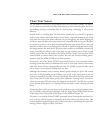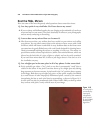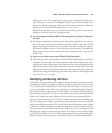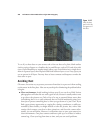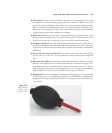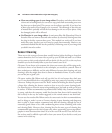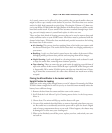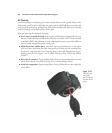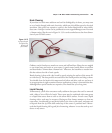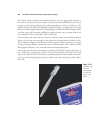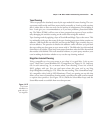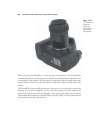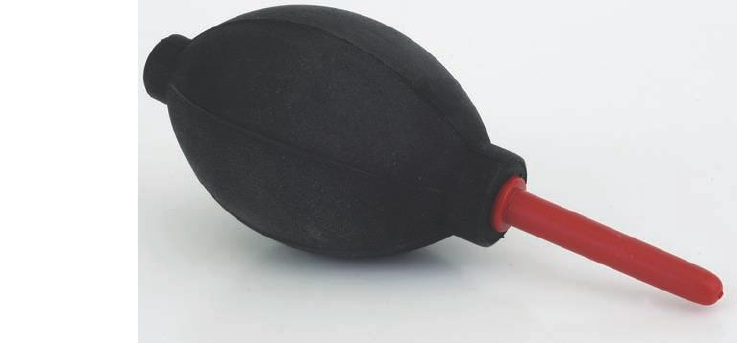
■ Clean lenses. There are a few paranoid types that avoid swapping lenses in order
to minimize the chance of dust getting inside their cameras. It makes more sense
just to use a blower or brush to dust off the rear lens mount of the replacement lens
first, so you won’t be introducing dust into your camera simply by attaching a new,
dusty lens. Do this before you remove the current lens from your camera, and then
avoid stirring up dust before making the exchange.
■ Work fast. Minimize the time your camera is lens-less and exposed to dust. That
means having your replacement lens ready and dusted off, and a place to set down
the old lens as soon as it is removed, so you can quickly attach the new lens.
■ Let gravity help you. Face the camera downward when the lens is detached so
any dust in the mirror box will tend to fall away from the sensor. Turn your back
to any breezes, indoor forced air vents, fans, or other sources of dust to minimize
infiltration.
■ Protect the lens you just removed. Once you’ve attached the new lens, quickly
put the end cap on the one you just removed to reduce the dust that might fall
on it.
■ Clean out the vestibule. From time to time, remove the lens while in a relatively
dust-free environment and use a blower bulb like the one shown in Figure 14.11
(not compressed air or a vacuum hose) to clean out the mirror box area. A blower
bulb is generally safer than a can of compressed air, or a strong positive/negative
airflow, which can tend to drive dust further into nooks and crannies.
■ Be prepared. If you’re embarking on an important shooting session, it’s a good idea
to clean your sensor now, rather than come home with hundreds or thousands of
images with dust spots caused by flecks that were sitting on your sensor before you
even started.
Chapter 14 ■ Nikon D7000: Troubleshooting and Prevention 481
Figure 14.11
Use a robust air
bulb for clean-
ing your sensor.



